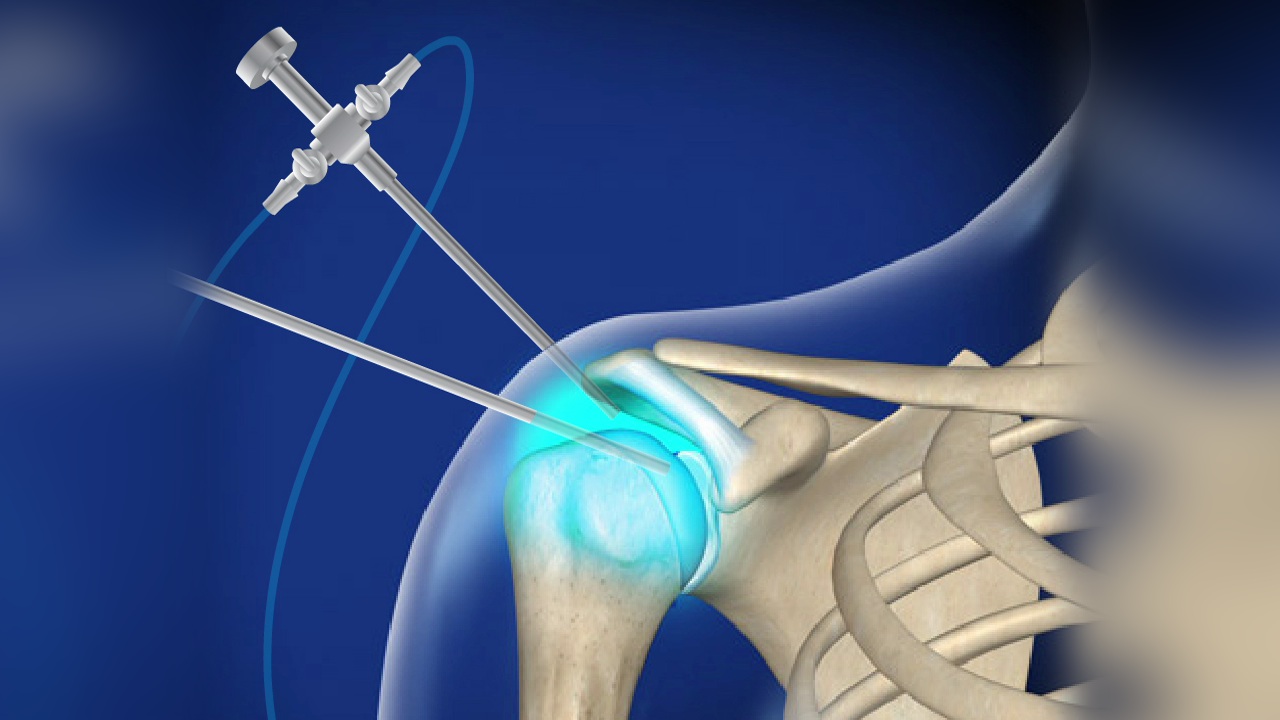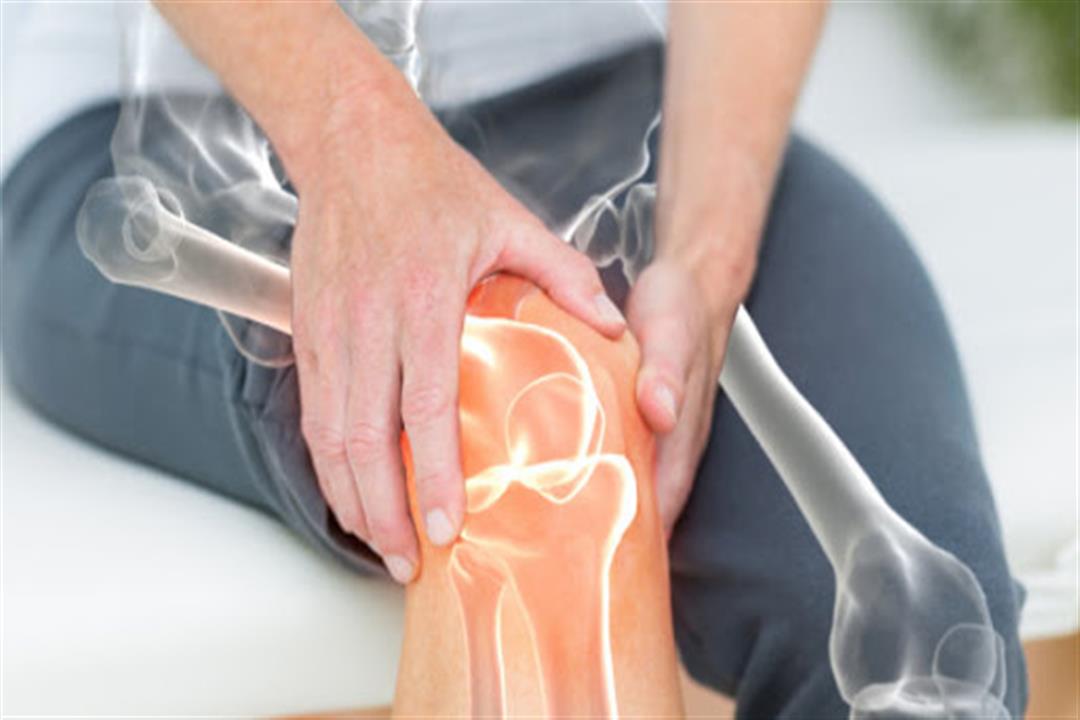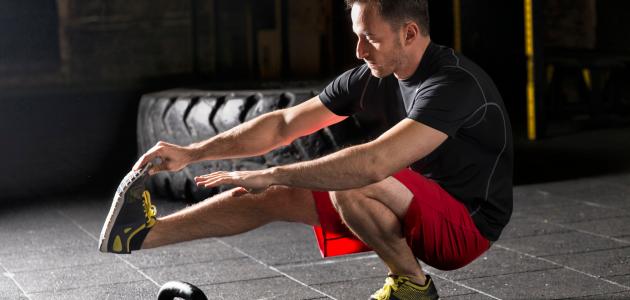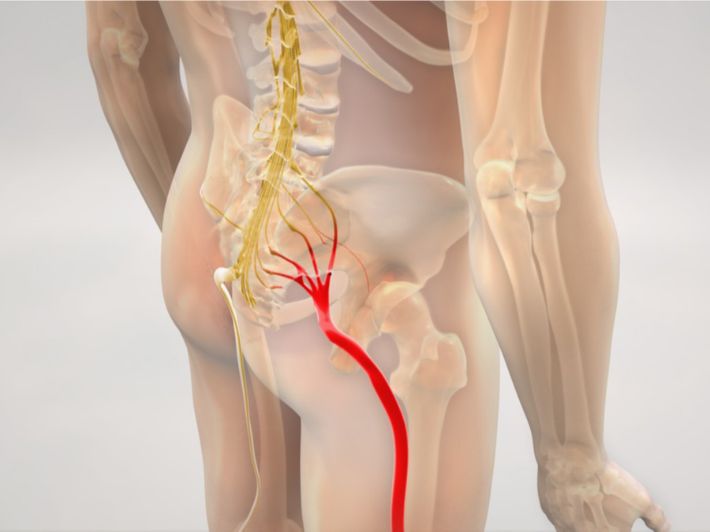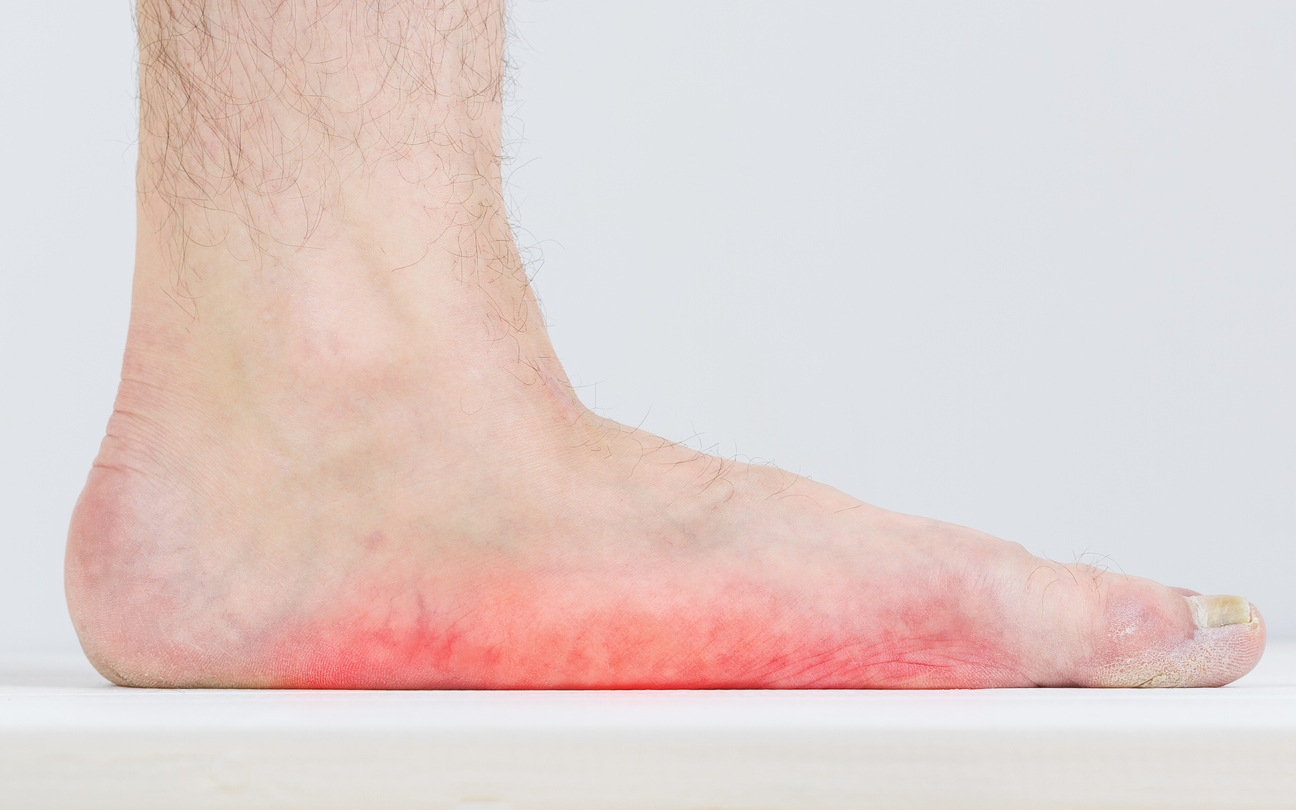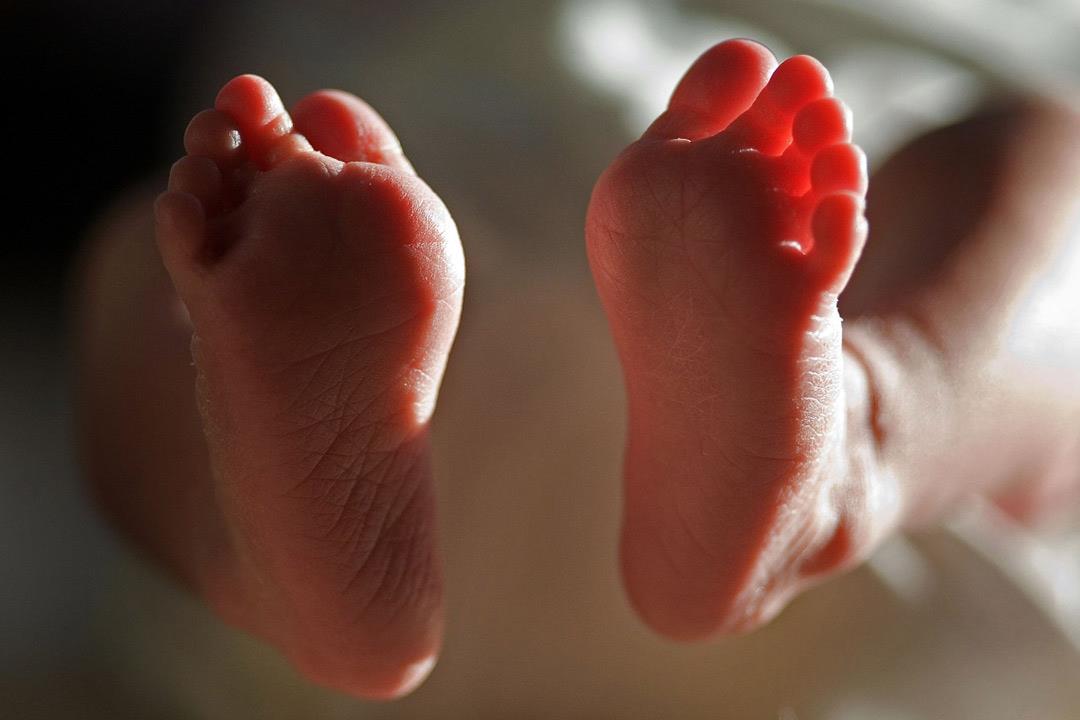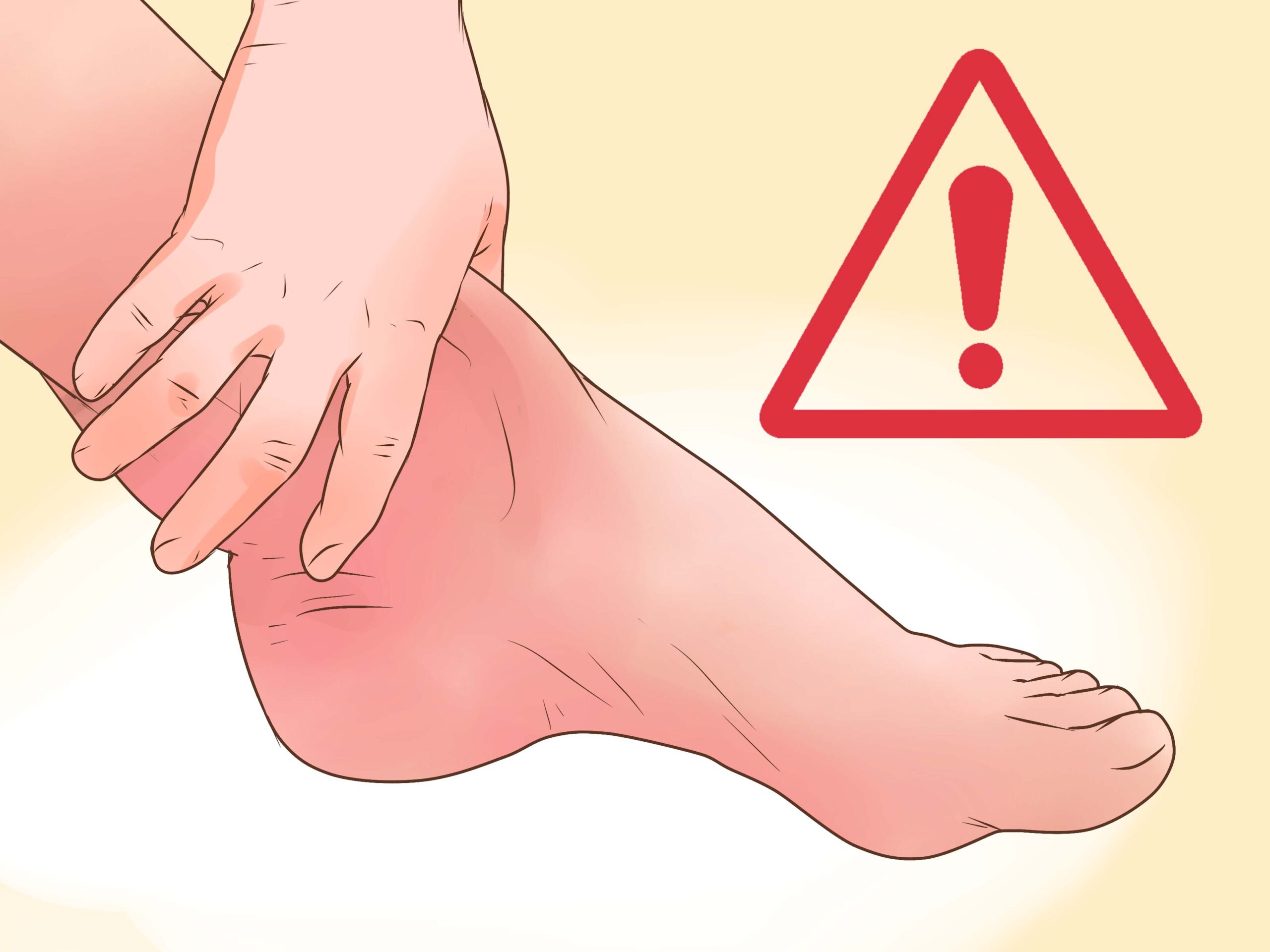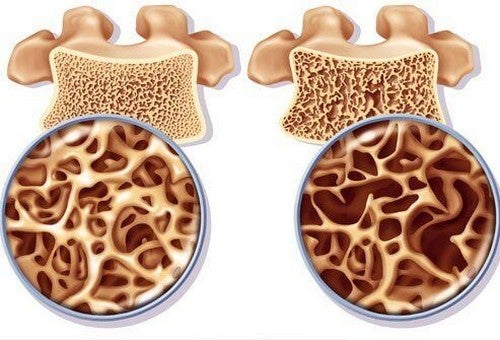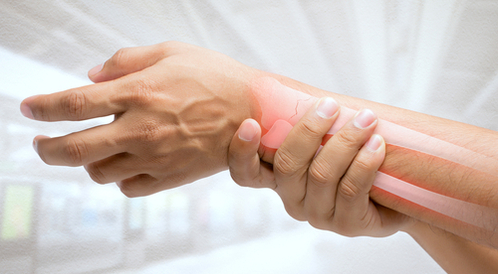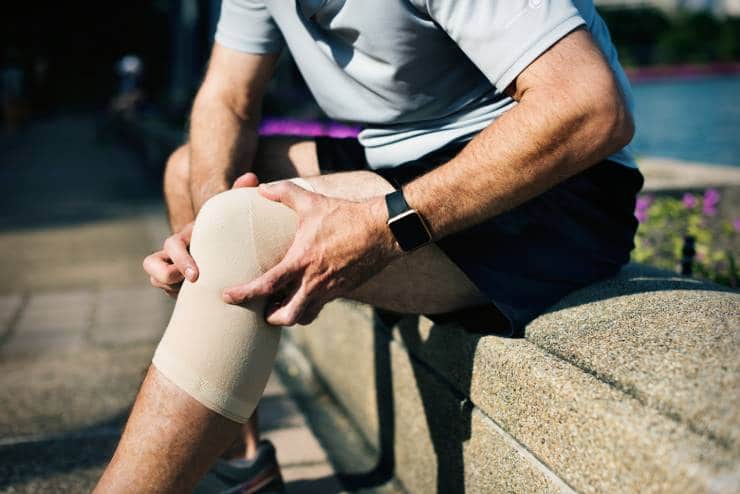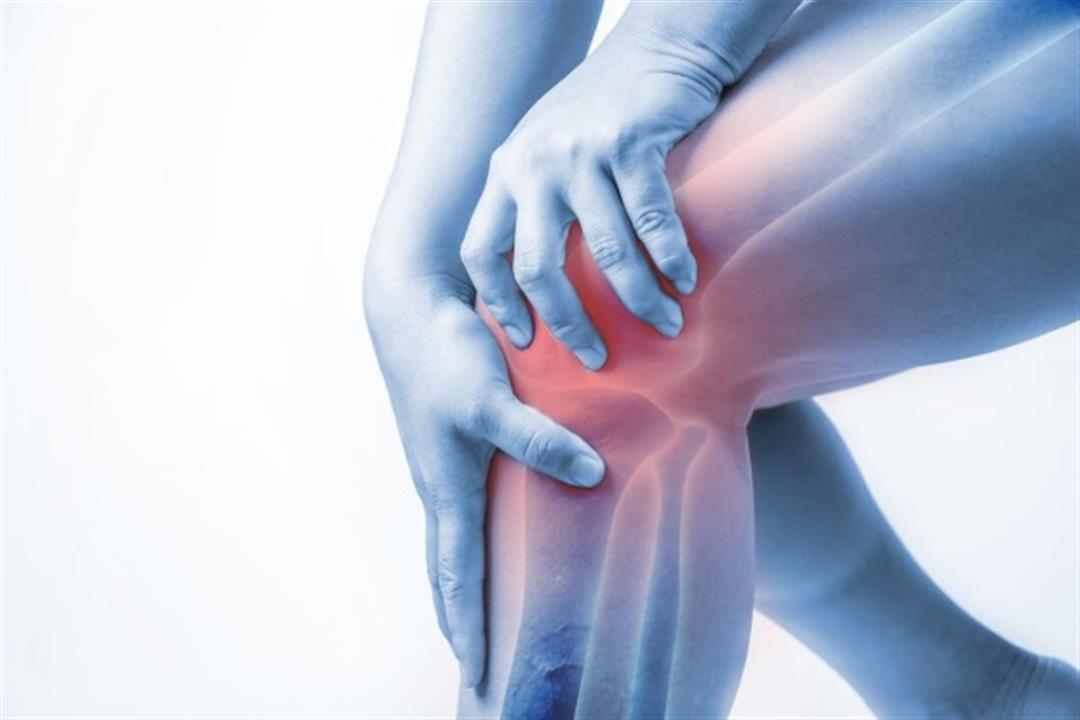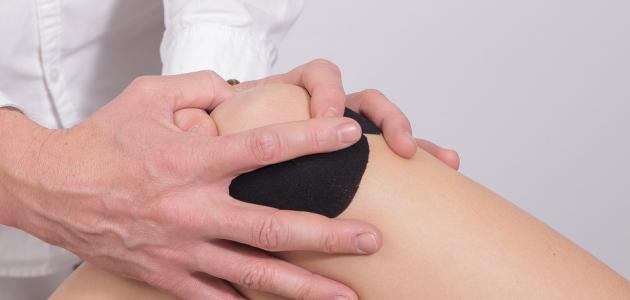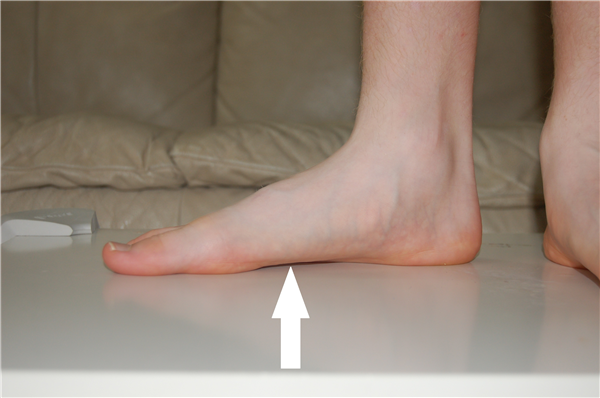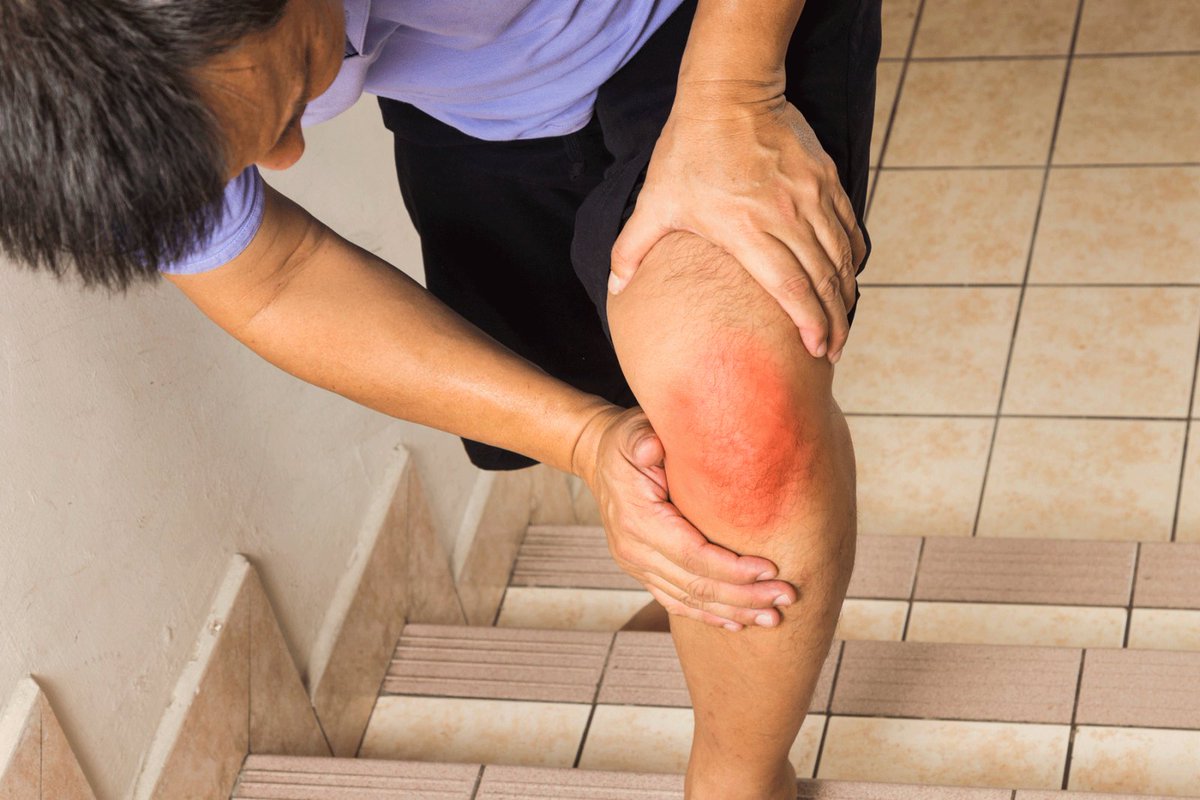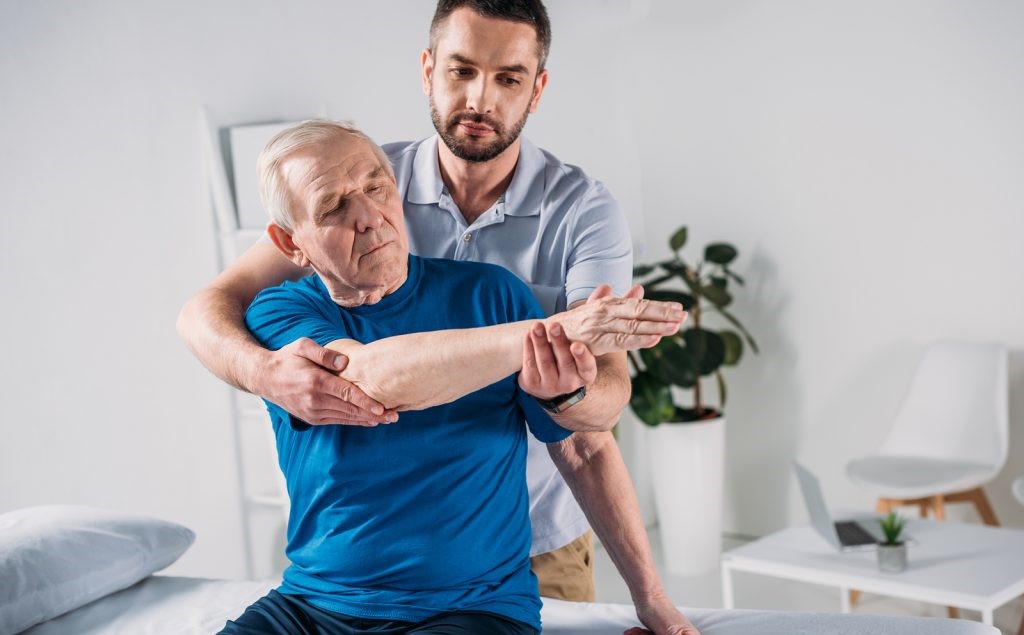Learn About the Healing Time of Thigh Bones and the Factors That Affect It!
Duration of Femur Bone Healing, In this article, we will learn in some detail about the duration of femur bone healing and the factors that affect it, in addition to the types of femur bone fractures, their causes, diagnosis, and various treatment methods. So follow us to receive all the latest information related to this matter.
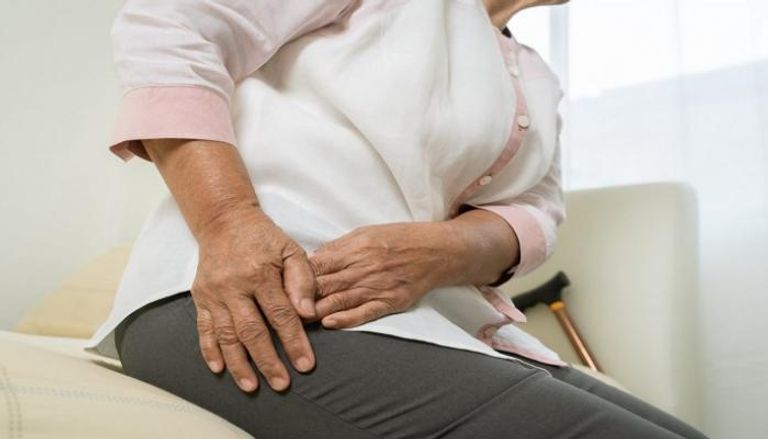
Duration of Femur Bone Healing
When the movement and high strength required from the thigh occurs, a fracture in the thigh bone can occur. One of the common types of fractures is a hip fracture and intertrochanteric fractures. A fracture in the hip area is classified when it occurs in the neck of the thigh bone itself, while an intertrochanteric fracture passes directly through the large trochanters.
The healing of thigh bones usually takes 4 to 6 months for the elderly, however, patients can return to their daily activities within a shorter period. The duration of bone healing depends on many factors, including the severity of the fracture, the presence and severity of skin wounds.
The fracture causes damage to the tissues surrounding the fracture, which affects the bone healing process. Therefore, it is considered to undergo the treatment process after determining the severity of the fracture and the extent of its impact on bone tissue, blood vessels, and nerves.
There may be reasons that lead to a delay in the duration of bone healing, including factors such as malnutrition, autoimmune diseases, and infection. To promote the bone healing process, different treatment methods can be used, including casting and physical therapy to strengthen the muscles surrounding the thigh and increase its stability.
In addition, surgery is used in cases of severe fractures or in the presence of deformities in bone symmetry. This procedure involves repairing the bones and fixing them using nails or plates and nails. Do not hesitate to contact Dr. Amr Amal for assistance in treating thigh bones.
Factors Affecting the Duration of Femur Bone Healing
When a person suffers a fracture in the thigh bones, the treatment and healing of those fractures become very important matters to regain the person’s vitality and normal movement. The duration of bone healing after fractures is often affected by a number of different factors that must be considered. The following are some of those factors:
- Age:
- Age is a crucial factor in the duration of femur bone healing.
- The younger the person is, the greater and faster the chance of bone healing.
- This is due to the strength and activity of the body during adolescence and youth.
- General Health Condition:
- The general health condition of the person has a significant impact on the speed of femur bone healing.
- People who suffer from chronic diseases such as diabetes and arthritis may have difficulty with the healing process.
- Proper Nutrition:
- Proper nutrition plays an important role in the bone healing process.
- Getting enough calcium and vitamin D can enhance the bone’s ability to heal.
- Smoking:
- Smoking is a negative factor that has a major impact on the duration of femur bone healing.
- Smoking affects blood flow in the body, which can delay the healing process and increase the risk of complications.
- Complex Surgery:
- In some serious cases, femur fractures require complex corrective surgery.
- These complex procedures may prolong the duration of bone healing.
- Body Strength and Physical Activity:
- People who regularly engage in physical activity and have stronger muscles may experience faster bone healing.
To ensure successful femur bone healing, all the factors mentioned above must be considered. The person should also adhere to the doctor’s instructions and take proper care of themselves during the bone healing period. Additionally, supplementary procedures such as physical therapy and taking appropriate nutritional supplements can promote healing duration and achieve better results.
Complications of the Procedure that Increase the Duration of Femur Bone Healing
During the healing process of thigh bones, some complications may occur that can contribute to prolonging the duration of bone healing. In this text, we will highlight some of these complications that the patient should be aware of, including the following:
- Infections: One of the common complications affecting the duration of femur bone healing is developing an infection in the surgical area. Infection can slow down the bone healing process and delay complete recovery. Therefore, the patient should follow the surgeon’s instructions after the surgery to avoid any potential infection.
- Poor Blood Supply: Interruption of blood supply to the femur head can occur during or after surgery. This problem is caused by cutting the arteries supplying the bone. Poor blood supply leads to delayed bone healing and can also cause femur head necrosis.
- Joint Instability: Surgery may result in hip joint instability, and this instability can adversely affect the bone healing process. It is important to adhere to the surgeon’s instructions and recommendations regarding rest and movement to avoid any complications related to joint instability.
- Problems with Bone Healing: It is possible for problems to occur in the bone healing process due to various factors. This includes instability of the fractured bone, lack of adequate protection for the fractured site, or exposure to excessive stress on the fracture area. These problems can disrupt the bone healing process and prolong the healing period.
- Unsuccessful Surgical Procedure: In some cases, the femur bone healing process may require surgical intervention if the initial surgery was unsuccessful. This may mean that the body needs additional time to rebuild the bone and improve the healing process.
It is essential for the patient and their family to be aware of the procedural complications that can affect the duration of femur bone healing. The doctor should guide the patient regarding post-operative instructions and actions to control these complications and improve the bone healing process. Therefore, rely on the specialized doctors at the Medical Center for Femur Bone Healing Care and Treatment, and we recommend Dr. Amr Amal for you.
What are the Signs and Symptoms of Femur Bone Fractures?
A femur bone fracture is considered a serious injury that can occur due to falls or accidents and requires immediate medical attention. Here, we will review some of the common signs and symptoms of a fracture at the femur level, including the following:
- Severe, Acute Pain: Severe pain in the thigh area is one of the symptoms of a fracture. This pain may be accompanied by difficulty moving the affected hip and an inability to put weight on the injured leg.
- Leg Deformity: You may notice that the injured leg appears shorter than the other leg. This deformity can occur as a result of the separation of bone fragments in the thigh area.
- Bruising and Swelling: The fracture may be accompanied by bruising and swelling in the thigh area and surrounding areas. These bruises and swelling may begin to appear within a few hours of the injury.
- Inability to Walk: You may experience difficulty or inability to bear weight on the injured leg and walk. Limited movement and severe pain can be factors affecting the ability to walk.
- Feeling Tired: In some cases, the injured person may feel generally tired due to the loss of normal blood supply to the fractured bone.
If you want to learn more information about hip replacement surgery and fracture symptoms, we recommend reading the following article.

What Can Cause Femur Bone Fractures?
Femur bone fractures are common injuries among adults and can occur due to aging, osteoporosis, and falls from heights. In this article, we will look at the potential factors that may cause femur bone fractures, including:
1. Age and Gender:
- Advancing age and changes in sex hormones are factors contributing to an increased risk of femur bone fractures.
- Bone density and muscle mass usually decrease with age, making bones less able to withstand and adapt to impacts.
2. Osteoporosis:
- Osteoporosis is one of the common diseases that affects bone strength and increases the likelihood of fractures.
- It is believed that osteoporosis occurs due to an imbalance in calcium and phosphorus levels in the body, which leads to weakened bones and an increased likelihood of fractures.
3. Falls from Heights:
- Falls from heights are a common cause of femur bone fractures among adults.
- This type of injury can occur due to accidents, such as car accidents, or due to tripping and falling while performing daily activities.
4. Lack of Physical Activity:
- Not engaging in regular physical activity and not training to maintain bone health is a factor that increases the risk of femur bone fractures.
- It is important to engage in light exercises that promote bone and muscle strengthening.
5. Falls from Ropes, Stairs, and High Edges:
- Falls from high places, such as ropes, stairs, and high edges, are another cause of femur fractures.
- Caution should be taken when engaging in dangerous activities, and appropriate safety procedures should be followed.
Move towards a more active and comfortable life with Dr. Amr Amal’s effective methods for femur bone healing.
Types of Femur Bone Fractures
Femur bone fractures are serious injuries that can occur due to various accidents and causes. Although a true hip fracture involves the hip joint, it can be classified into four main types. Let’s take a look at these types and learn about the medical details related to them:
- Spiral Fractures:
Spiral fractures occur in the long bones of the body, such as the femur bone, fibula, or the tibia in the legs, or the arm bones. These fractures are characterized by spiraling around the bone. Trauma can occur when femur or pelvic bone fractures cause severe internal bleeding, and it is considered a serious injury that requires immediate medical attention. - Segmental Fractures:
There are different types of segmental fractures in the femur bones, characterized by the complete separation of the bone base. This type of fracture is characterized by its instability and the dispersion of bone fragments, making it difficult to repair and increasing the difficulty of recovery. - Femur Neck Fractures:
Hip fractures can also occur in the head of the femur bone or below the greater trochanters, called intertrochanteric fractures. Femur neck fractures are relatively common injuries and occur due to strong impacts on the bone or due to the effect of bone problems such as osteoporosis. Femur neck fractures have particular problems, as they affect a sensitive area located below the hip joint, increasing the difficulty of treatment and prolonging the recovery period. - Other Fractures:
In addition to the types mentioned above, other types of femur bone fractures can occur. There may be fractures in the femur bone due to car accidents, sports accidents, or excessive medical pressure on the bone, and these types require appropriate treatment and care according to the patient’s condition.
If you want to learn more about bone fracture surgeries, click here.
Diagnosis of Femur Bone Fractures
Diagnosing femur bone fractures requires a comprehensive and accurate evaluation by a specialized medical team. Many factors are relied upon to determine the presence of a fracture in the femur bones. In this guide, we will highlight some of the main steps for diagnosing femur bone fractures, including:
- Patient’s Medical History:
The patient’s medical history is the essential starting point for diagnosis. The doctor must question the patient about any previous injuries that may have caused a femur bone fracture. - Complete Physical Examination:
The patient’s physical examination includes evaluating the soft tissues in the pelvic and thigh area. This examination helps to detect any external signs of fractures. - Imaging Studies:
Imaging studies are important for diagnosing femur bone fractures. These studies include X-rays, magnetic resonance imaging (MRI), and computed tomography (CT) scans. These studies are used to determine the location and type of bone fracture. - Consultation with an Orthopedic Surgeon Specialized in the Hip:
Based on the results of the examinations and imaging studies, the doctor may decide to consult an orthopedic surgeon specialized in hip problems. The orthopedic surgeon is considered the most qualified person to diagnose and evaluate femur bone fractures. - Determining the Location of the Fracture:
Treatment options depend on the location of the fracture in the femur bones. Most femur bone fractures occur directly below the bone head. There are two common types of femur bone fractures: femur neck fractures (below the head), which occur in the neck of the bone.
The duration of femur bone healing is no longer an obstacle with the exceptional medical care from Dr. Amr Amal.
Treatment Methods for Relieving Femur Bone Fracture Pain
- Urgent Surgery:
A large portion of femur bone fracture cases require immediate surgery. This is done to prevent serious complications and avoid the complications that may accompany traditional treatment, which requires staying in bed for an extended period. The surgical procedure involves repairing the fracture and fixing the femur bones using nails or a complete artificial femur bone replacement surgery. - Rehabilitation:
After surgery, there is a need for rehabilitation to restore the strength and movement of the muscles surrounding the hip and promote bone healing. Rehabilitation includes physical therapy exercises under the guidance of a rehabilitation specialist, aimed at restoring flexibility, increasing muscle strength, improving balance, and coordination. These exercises may include warm-up exercises and specialized exercises to strengthen the muscles and improve balance and coordination. - Medications:
Medications can be used to relieve pain and facilitate the rehabilitation process after femur bone fracture surgery. These medications include non-steroidal pain relievers and blood thinners, which help reduce the risk of blood clots during the rehabilitation period. Calcium and vitamin D preparations can also be used as supplements to promote the bone healing process.
Here is the translated text with the same HTML structure and English links:
Learn About the Healing Time of Thigh Bones and the Factors That Affect It!
- Healthy Nutrition:
Consuming a healthy and balanced diet is an important part of alleviating pain from thigh bone fractures and promoting their healing process. It is recommended to consume a diet rich in proteins, calcium, and vitamin D, as they play a crucial role in bone building and strengthening. Some protein-rich foods include lean meats, fish, legumes, and dairy products. Calcium-rich foods include dairy products, spinach, and broccoli. - Adjunctive Therapy:
Along with surgical treatment and rehabilitation, there may be a role for adjunctive therapy in reducing pain from thigh bone fractures. This includes physical therapy such as movement therapy, massage, and heat therapy. Adjunctive therapy can contribute to reducing inflammation, improving balance, and relieving tense muscles. - Medications:
Medications can be used to relieve pain and facilitate rehabilitation after femur bone fracture surgery. Pain-relieving medications such as non-steroidal anti-inflammatory drugs (NSAIDs) and anticoagulant drugs, which help reduce the risk of blood clots during the rehabilitation period, can be used. Calcium and vitamin D preparations can also be used as supplements to promote bone healing. - Healthy Nutrition:
Consuming a healthy and balanced diet is an important part of reducing the pain of femur bone fractures and enhancing the healing process. It is recommended to consume a diet rich in proteins, calcium, and vitamin D, as they play a crucial role in bone building and strengthening. Some protein-rich foods include lean meats, fish, legumes, and dairy products. Calcium-rich foods include dairy products, spinach, and broccoli. - Adjunctive Therapy:
In addition to surgical treatment and rehabilitation, adjunctive therapy can play a role in relieving pain from femur bone fractures. This includes physical therapy such as movement therapy, massage, and heat therapy. Adjunctive therapy can contribute to reducing inflammation, improving balance, and relieving tight muscles.
It’s important to note that the appropriate treatment for thigh bone fractures depends on the severity of the fracture and other patient-related factors. Consulting the treating physician is important to evaluate the condition and determine the best treatment plan.
Get accurate diagnosis and proper treatment for thigh bone healing with Dr. Amr Amal.
Home Tips to Reduce Thigh Bone Healing Time
The healing and bone fusion process for the thigh often occurs naturally and spontaneously, but some home steps and measures can be taken to accelerate the healing process and reduce the duration of bone healing. Here are some tips to follow:
1. Healthy Nutrition: Proper nutrition is highly important in promoting bone healing. It is recommended to consume foods rich in calcium, such as milk and dairy products, fatty fish rich in vitamin D, proteins, and other vitamins that help in building and strengthening bones.
2. Supportive Wraps: Supportive wraps and elastic bands may be helpful in stabilizing bones and reducing unwanted movement. Consultation with a specialist doctor about the use of wraps that suit your health condition and proper adjustment is advised.
3. Rest and Fracture Immobilization: Avoid strenuous activities and harsh movements during the healing period. The doctor may recommend immobilizing the fractured area using a cast or other appropriate means to protect and stabilize the fracture.
4. Dietary Management: If there is excess pressure on the fractured thigh, it is advisable to strive for a healthy and balanced weight. In cases of obesity or excess weight, the thigh may not heal quickly and properly.
5. Movement and Exercises: Gentle movement of the thigh without excessive strain can be beneficial in stimulating bone healing. It is recommended to follow the doctor’s instructions regarding simple exercises that can be done to improve the strength and movement of the fractured thigh.
6. Adequate Rest: The body needs rest to speed up the healing process. Avoiding strenuous activities and heavy lifting for the fractured thigh during the recovery period and giving the affected limb sufficient time to heal.
7. Medical Guidance: Precautions and guidance specific to the bone healing process may vary from case to case. Therefore, it is important to strictly follow the advice of the specialist doctor and communicate with them about the procedure details and home care instructions.
Remember that thigh bone healing is a process that requires patience and commitment, and in case of any complaints or complications, consulting the doctor for necessary care is important. For more information about hip replacement surgery, click here.

Who Is the Best Orthopedic Doctor for Treating Thigh Bone Fractures?
Dr. Amr Amal stands out as one of the top specialists in this field in Egypt. Dr. Amr Amal has extensive experience and knowledge in orthopedic and joint surgery, proving his competence in providing effective and personalized treatment for cases suffering from thigh bone fractures.
Dr. Amr Amal strives to improve patients’ quality of life by offering superior care and satisfactory service. His strength lies in his belief that every case deserves optimal care and necessary treatment to achieve complete recovery.
His vast experience in all types of orthopedic surgery includes treatment techniques for bone fractures, hip joint replacement, and other bone injuries. Dr. Amr Amal is a member of Dar Al-Fouad Medical Tower as an orthopedic surgery consultant, where he gains valuable experience and necessary challenges to provide excellent medical care.
Dr. Amr Amal graduated as an orthopedic doctor from the Faculty of Medicine at Ain Shams University with honors and distinction, excelling in his innovative knowledge and continuous learning in his specialty field. Dr. Amr Amal fully understands the importance of providing comfort and excellent service to patients. Therefore, he welcomes patients in his comfortable clinic and offers them high-quality service.
In summary, it can be said that Dr. Amr Amal is one of the top specialists in orthopedic and joint surgery in Egypt. He is distinguished by his experience and competence in treating thigh bone fractures and other bone injuries. He serves as an inspiring teacher and is dedicated to providing medical care to patients in a compassionate and high-quality manner.

